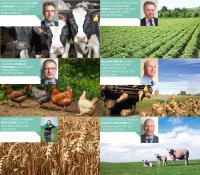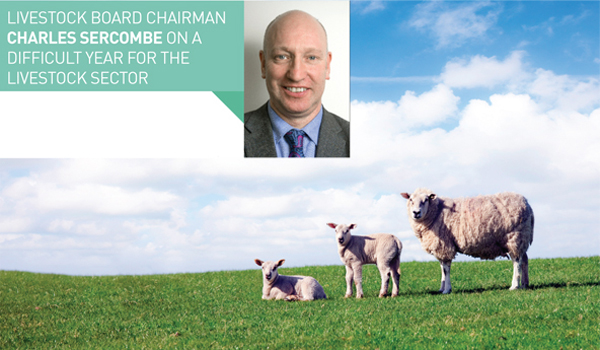The 2015 beef price tracked well below the 2014 average until June when we saw some strengthening of the market until late July, before leveling off again. Some stability is certainly welcomed.
At present, with the beef price around 13p above the five-year average we are in a better place, but we cannot be complacent. Supplies here and in Ireland are expected to increase from quarter three next year, which could put our price under pressure.
I remain particularly concerned about the long-term profitability of the suckler cow sector. We have a great product and a great story to tell, so we need British beef to be the first choice for UK retailers and
foodservice whilst looking to secure new export markets.
The lamb price has been under considerable pressure all year, tracking well below the five-year average. I’m sure we’re all aware of the reasons for this; the strength of sterling has made exports difficult, and when combined with lower demand both here and in Europe, it’s been harder for the processors to secure sales, and balance the value of the carcasse.
Production is up 4% this year, and with significant volumes of New Zealand lamb hitting retailer shelves from Easter and then continuing to displace British lamb throughout our peak season, it has inevitably depressed the price we receive.
2015 around the sectors...
 Read the thoughts of our board chairmen across the following farming sectors:
Read the thoughts of our board chairmen across the following farming sectors:
In the early part of the year the board dealt with the thorny issue of lifetime assurance for beef.
We consulted extensively with members and involved our network of county advisers and regional livestock boards to formulate our response. It is fair to say that the consultation provoked strong opinions from both sides of the argument. This will no doubt be debated further in the coming months, but the livestock board agrees that to deliver the move to lifetime assurance under the model proposed was, and is not possible.
It is now for Red Tractor and the rest of the supply chain to provide evidence that supports the change from the current 90-day residency.
I think we can all agree that the year ahead promises to be a busy one. The Commission established a reflection group for sheep with representatives drawn from industry across the EU to discuss how the EU/Commission can help build a more profitable sheep sector. As chairman of the COPA working party on sheep, I am in the privileged position of being able to set out my priorities for this group: we must address the trade issues with NZ and look again at EID rules and disproportionate cross compliance penalties. We must see improved communication down the food chain to the producer – improved transparency, standard dressing specifications and mandatory price reporting is a key ask if we are to drive up the profitably of the sheep sector.
We have submitted further evidence to the Food Standards Agency that supports the move to a cut-off date of 30 May for ageing sheep for SRM removal purposes. If, as expected we receive government support, it will be a significant achievement for the NFU.
I cannot finish without mentioning the resignation of Stuart Roberts as chairman of the AHDB beef and lamb sector board.
Stuart’s resignation undoubtedly ignited a debate on the use of the beef and lamb levy. Livestock members have been very clear that levies collected from the beef and lamb sectors are retained within these sectors, and it is for the board, through the sector chair to identify and direct where the levy money is spent.
Properly targeted marketing and promotional activity for the benefit of beef and lamb payers must be
part of the mix. We now have a new chairman in Adam Quinney who has an immense amount of knowledge and expertise of the sector, which I’m sure he will use to deliver for benefit of beef and lamb levy payers.
